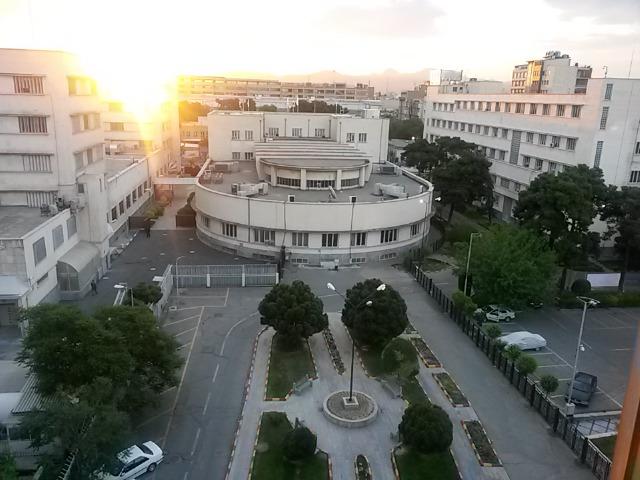The governor of Iran’s central bank blamed the ongoing protests for the record low of the country’s currency. The governor also noted other factors, such as sanctions imposed on the country, as a reason for the record lows.
On Saturday, the Central Bank of the Islamic Republic of Iran’s governor Ali Salehabadi said that the ongoing protests, paired with US sanctions, would be the reasons for the Iranian currency’s fall to record lows. Salehabadi, however, added that dollars could be injected into the market in order to boost the currency.
“To make adjustments in the market, we in the Central Bank will act both as a market-maker and as a hard currency policy-maker,” said Salehabadi on state television. “Whichever hard currency is more in demand, we will offer that.”
The Iranian rial lost nearly 20 percent of its value since the start of the nationwide protests. This is compared to its value in 2018, when the rial was trading at around 65,000 per US dollar before Washington withdrew the US from the 2015 nuclear deal and reimposed sanctions on Iran instead.
The nationwide protests erupted in September following the death of Kurdish-Iranian woman Mahsa Amini. Amini died in the custody of the morality police after she was arrested for allegedly violating the Islamic Republic’s dress code that is imposed on women.
The protests also marked the biggest challenges to Iran’s clerical rulers since the 1979 Revolution and have now been joined by protests of oil workers demanding higher wages on Saturday.
Tehran has sought to blame the protests on the Islamic Republic’s adversaries, such as the United States.
The demonstrations by groups of oil workers on the same day took place in southern Iran, demanding higher salaries and retirement bonuses, according to videos and accounts of the protests shared on social media. The activist HRANA news outlet said a group of oil workers staged protests outside the Pars Oil and Gas Company in Asaluyeh in the southern Iranian province of Bushehr.
The workers also demanded the removal of high-income taxes, a salary cap, improved welfare services and health conditions. Oil workers were also staging demonstrations in Tang-e-Bijar in western Iran, Gonabad in the northeast, and protests by firefighters at the Gulf Island of Kharg, which is where the country’s main export terminal is located.



 Zelenskiy to Meet Trump to Advance Ukraine Peace Talks and Security Guarantees
Zelenskiy to Meet Trump to Advance Ukraine Peace Talks and Security Guarantees  Kim Jong Un Signals Continued Missile Development as North Korea Plans Five-Year Military Modernization
Kim Jong Un Signals Continued Missile Development as North Korea Plans Five-Year Military Modernization  South Korea Prosecutor Alleges Former First Lady Kim Keon Hee Abused Power for Bribes
South Korea Prosecutor Alleges Former First Lady Kim Keon Hee Abused Power for Bribes  US Airstrikes Target Islamic State Militants in Northwest Nigeria Amid Rising Security Concerns
US Airstrikes Target Islamic State Militants in Northwest Nigeria Amid Rising Security Concerns  Lebanon Cabinet Approves Financial Gap Law to Tackle Ongoing Economic Crisis
Lebanon Cabinet Approves Financial Gap Law to Tackle Ongoing Economic Crisis  Japan Approves Record ¥122.3 Trillion Budget as Takaichi Seeks Fiscal Balance
Japan Approves Record ¥122.3 Trillion Budget as Takaichi Seeks Fiscal Balance  Trump and Zelenskiy Signal Progress Toward Ukraine Peace Deal, Donbas Still Unresolved
Trump and Zelenskiy Signal Progress Toward Ukraine Peace Deal, Donbas Still Unresolved  Kim Jong Un Oversees Strategic Cruise Missile Launch to Reinforce North Korea’s Nuclear Deterrence
Kim Jong Un Oversees Strategic Cruise Missile Launch to Reinforce North Korea’s Nuclear Deterrence  FBI Surges Resources to Minnesota Amid Fraud Investigations Linked to Somali Community
FBI Surges Resources to Minnesota Amid Fraud Investigations Linked to Somali Community  FBI to Permanently Close Hoover Building, Relocate Headquarters to Reagan Building
FBI to Permanently Close Hoover Building, Relocate Headquarters to Reagan Building  Trump–Netanyahu Talks Aim to Revive Gaza Ceasefire and Address Iran, Hezbollah Tensions
Trump–Netanyahu Talks Aim to Revive Gaza Ceasefire and Address Iran, Hezbollah Tensions  Zelenskiy Discusses Ukraine Peace Efforts With Trump Envoys
Zelenskiy Discusses Ukraine Peace Efforts With Trump Envoys  Myanmar Election 2025 Faces Global Scrutiny Amid Civil War and Political Repression
Myanmar Election 2025 Faces Global Scrutiny Amid Civil War and Political Repression  Bolsonaro Undergoes Phrenic Nerve Block Procedure After Surgery-Related Complications
Bolsonaro Undergoes Phrenic Nerve Block Procedure After Surgery-Related Complications  Argentina Congress Approves 2026 Budget Under Milei, Marking First Legislative Passage Since 2023
Argentina Congress Approves 2026 Budget Under Milei, Marking First Legislative Passage Since 2023  Australia Orders Independent Review After Bondi Mass Shooting, Albanese Resists Royal Commission Calls
Australia Orders Independent Review After Bondi Mass Shooting, Albanese Resists Royal Commission Calls  Thailand-Cambodia Ceasefire Holds After Deadly Border Clashes
Thailand-Cambodia Ceasefire Holds After Deadly Border Clashes 





























